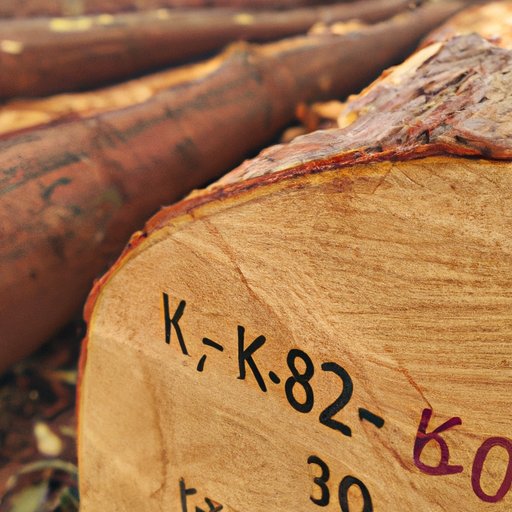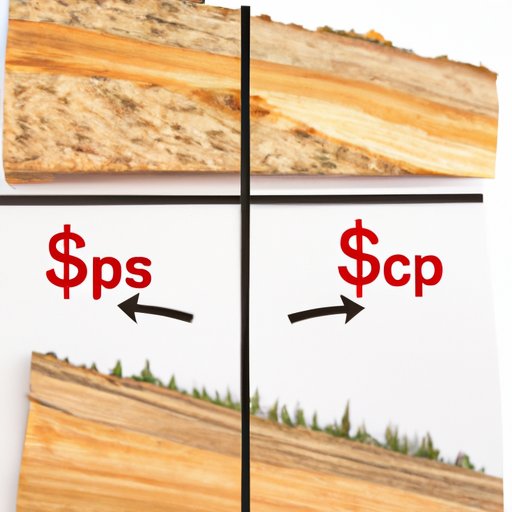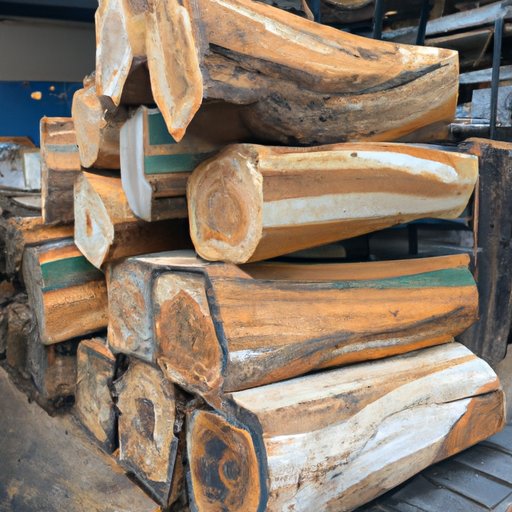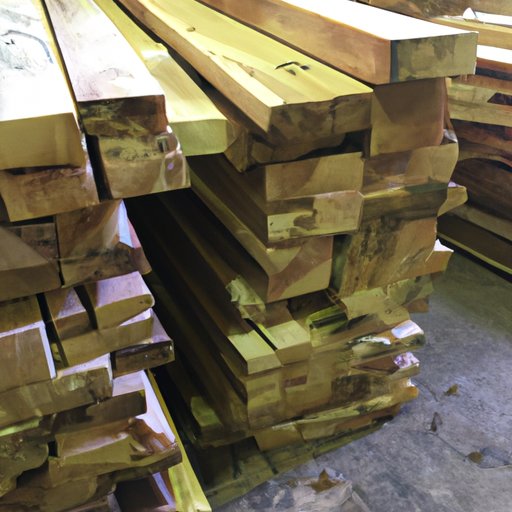Introduction
Wood is a popular building material for many projects, from furniture making to home construction. But how much does wood cost? This article will explore the various factors that influence the price of wood, including the type of wood, quality, transportation costs, supply and demand, and seasonal variations. We’ll also compare the cost of softwood and hardwood, investigate the benefits of buying from local suppliers, and assess the advantages of purchasing reclaimed wood.
Analyzing the Cost of Different Types of Wood
The cost of wood varies depending on the type. Softwoods, such as cedar, pine, fir, and spruce, are generally cheaper than hardwoods like oak, maple, and mahogany. Softwood lumber is typically priced between $2 and $6 per board foot (1 foot x 1 foot x 1 inch), while hardwood lumber can range from $3 to over $20 per board foot. Other types of wood, such as teak, walnut, and cherry, may be even more expensive.

Exploring the Factors that Affect Wood Prices
Several factors influence the price of wood. Supply and demand play a major role in determining the cost. If there is a high demand for a particular type of wood, the price will likely increase. On the other hand, if the supply is low, prices could go up as well.
The quality of the wood also affects its price. Higher-grade wood with fewer knots and imperfections usually costs more than lower-grade wood with more knots and blemishes. Transportation costs can also add to the overall price of the wood, especially if it needs to be shipped from far away.

Comparing Costs of Softwood and Hardwood
Softwood and hardwood have some similarities and differences when it comes to cost. Generally speaking, softwood tends to be less expensive than hardwood. However, this isn’t always true, as certain types of softwood can be quite costly, such as cedar and redwood. On the other hand, some hardwoods are relatively affordable, such as poplar and ash.
Both softwood and hardwood can be found in different grades, which can affect the price. The higher the grade, the more expensive the wood. Additionally, the availability of the wood can influence the cost. If the wood is in short supply, the price will likely increase.
Investigating Seasonal Variations in Wood Prices
Seasonal fluctuations can also affect the cost of wood. In general, wood prices tend to be higher in the summer months due to increased demand. Winter prices can be lower due to decreased demand. Spring and fall prices might be somewhere in between.
Examining the Cost of Buying Wood from Local Suppliers
Buying wood from local suppliers can offer several benefits. For one, you can inspect the wood before buying it, which can help you find the best quality at the best price. Additionally, buying locally supports small businesses and helps keep prices competitive. However, there are some drawbacks to consider, such as limited selection and higher prices compared to online retailers.

Assessing the Benefits of Purchasing Reclaimed Wood
Reclaimed wood is an increasingly popular option for woodworking projects. Not only is it eco-friendly, but it can also be an affordable alternative to buying new wood. Reclaimed wood often costs less than fresh-cut wood because it has already been used and is no longer in demand. The price can vary depending on the age and condition of the wood, but it is usually significantly cheaper.
Conclusion
In conclusion, the cost of wood depends on several factors, including the type of wood, quality, transportation costs, supply and demand, and seasonal variations. Softwood tends to be cheaper than hardwood, although certain types of softwood can be more expensive. Buying from local suppliers can offer several benefits, and purchasing reclaimed wood can be an affordable and eco-friendly option.
(Note: Is this article not meeting your expectations? Do you have knowledge or insights to share? Unlock new opportunities and expand your reach by joining our authors team. Click Registration to join us and share your expertise with our readers.)
